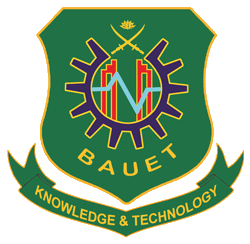COVID-19 Detection from Chest X-Ray Image using Deep Convolutional Neural Network
2019 is the year when the novel coronavirus scientifically known as SARS-Cov-2, spread
drastically all over the world, killing millions of people worldwide. No effective antivirus has yet
to be discovered. Detecting the virus is crucial for preventing unfortunate deaths. This research
proposes a deep convolutional neural network-based model that achieves high accuracy and low
false-positive rate for detecting covid-19 from a chest x-ray image.
High Performance Optical Character Recognition (OCR) Software for Digitizing Bengali Literature
Bengali, a widely used language spoken by more than 230 million people worldwide,
has a huge inheritance in terms of literature. Almost all of those literature is not digitized. To
preserve those literature, and make the information indexed, we need an Optical Character
Recognition (OCR) software with high accuracy, so that these literatures can be digitized and
make that information available for the mass people. This research aims at fulfilling this
objective as almost no good OCR software is present for Bangla Language.

PLASTIC WASTE RECYCLING PRACTICE IN NATORE DISTRICT, BANGLADESH
This study is aimed to find out the plastic waste recycling practice in Natore District as it has
become the biggest concern for the environment. A questionnaire-based survey at 11 shops was
conducted in 4 upazila of Natore district. The study found that the there are three types of plastic
waste is being recycled or processed in Natore area which are pet bottles (PB), hard plastic
processed (HP 1) and hard plastic non-processed (HP2). The collection shops size is around
3777±2160 sq/ft in whereas the processing shops size is 13513±7686 sq/ft. On average 6 people
work in each type of shops, aged from 20 to 35 years and women are less involved in this sector.
Worker mostly earned 270 BDT on average pay day. Collection shops collect 1400±70.72 kg
(1.54 ton) and processing shops collect 970±29.86 kg (1.069 ton) plastic waste every week that
contributes 0.14 % of the total plastic waste recycled in Bangladesh. Price of the products is a bit
unstable. However, in general PB, HP1 and HP2 are bought 10-12 20-30 and 5-7 BDT/kg
respectively and sold to industry on 17-18, 45-50, 10 BDT/kg respectively, for final recycle.
Student Name (4 th Batch)
1. E.S. SHAFKATH (16101013)
2. MD. ASHIKUR RAHMAN (16101015)
3. NAZMUSH SADAT (16101020)
Supervisor Name:
Dr. Engr. Md. Mahmudur Rahman
Assistant Professor
Dept. of CE



Emotion Recognition from EEG signal using Convolutional Neural Network
Electroencephalogram (EEG) that measures the electrical activity of the brain has been used
extensively to recognize emotion. Normally feature based emotion recognition requires a strong
effort to design the perfect feature or feature set related to the classification of emotion. To curtail
the manual human effort we designed a model by using a virtual image from EEG with
Convolutional Neural Network (CNN). Initially, we planned to calculate Pearson’s correlation
coefficients form different sub-bands of EEG to formulate a virtual image. Later, this virtual image
was fed into a CNN architecture to classify emotion. We made two distinct protocols; between
these, protocol-1 was to classify positive and negative emotion and protocol-2 was to classify four
distinct emotions using internationally authorized DEAP dataset. Our proposed method is helpful in
recognizing emotions efficiently.
Wearable Technology to Assist the Patients Infected with Novel Coronavirus (COVID-19)
Wearable technology plays a significant role in our daily life as well as in the healthcare industry.
The recent coronavirus pandemic has taken the world’s healthcare systems by surprise. Although
trials of possible vaccines are underway, it would take a long time before the vaccines are permitted
for public use. Maximum government efforts are currently geared towards preventing the spread of
the coronavirus and predicting probable hot zones. The essential and healthcare workers are the
most vulnerable towards coronavirus infections due to their required proximity to potential
coronavirus patients. Wearable technology can potentially assist in these regards by providing real-
time remote monitoring, symptoms prediction, contact tracing, etc. The goal of this work is to
discuss the different existing wearable monitoring devices (respiration rate, heart rate, temperature,
and oxygen saturation) and respiratory support systems (ventilators, CPAP devices, and oxygen
therapy) which are frequently used to assist the coronavirus affected people. The devices are
described based on the services they provide, their working procedures as well as comparative
analysis of their merits and demerits with cost. A comparative discussion with probable future
trends is also drawn to select the best technology for COVID-19 infected patients. It is envisaged
that wearable technology is only capable of providing initial treatment that can reduce the spread of
this pandemic.








